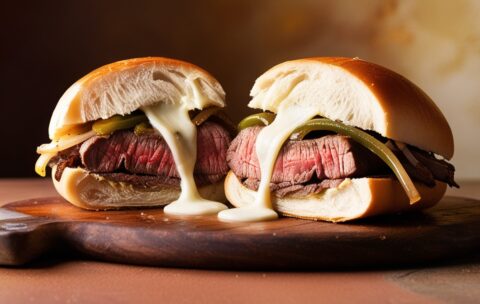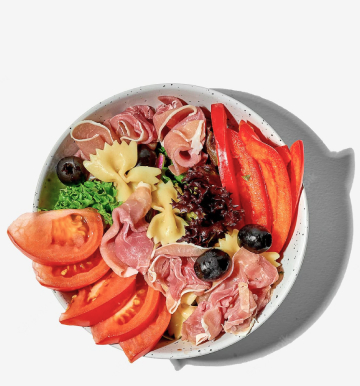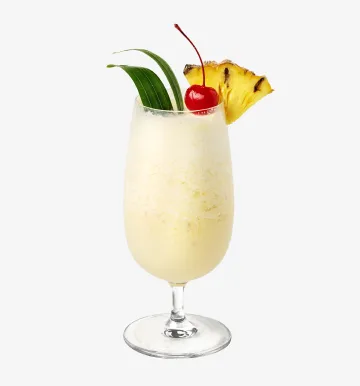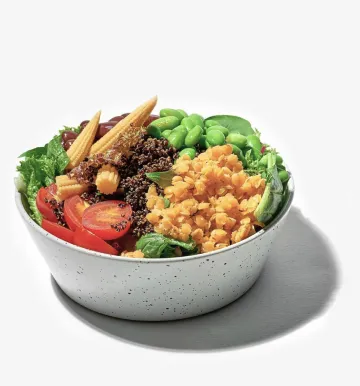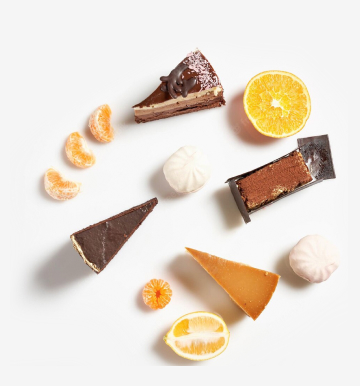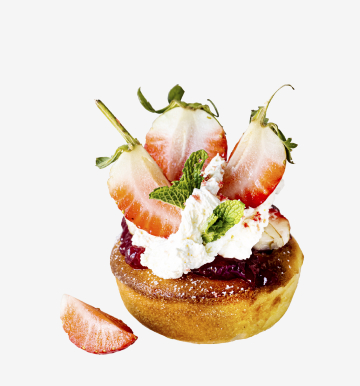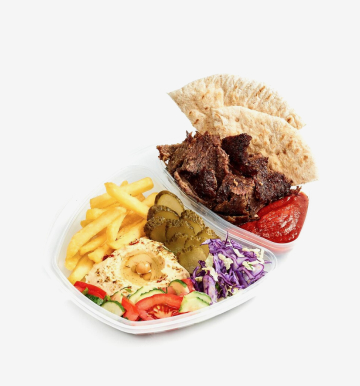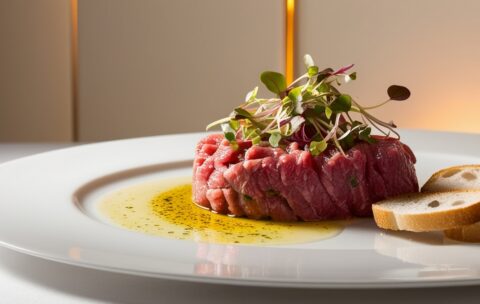Home Update 02
October 4, 2023 2025-06-05 13:04Home Update 02
Become a Home Chef
Learn to cook from scratch and master restaurant-quality meals in your own kitchen. Perfect for beginners and food lovers.

Our Top Courses
We've selected the best programs to get you started. Each course offers step-by-step lessons, hands-on recipes, and guaranteed results — even for beginners.
Cobb Salad
6 Lessons
2.9 hours
Intermediate
What you'll learn
How to poach or grill chicken breast for optimal juiciness
Technique for rendering and crisping bacon
Proper avocado selection and slicing without browning
Making a balanced Dijon-honey vinaigrette
Layering and plating the salad for visual appeal
Variations to adapt to dietary preferences (vegetarian, gluten-free)
Crêpe Suzette
3 Lessons
3.3 hours
Intermediate
What you'll learn
Techniques for cooking crêpes evenly in a nonstick pan (temperature control, batter spread).
Steps to prepare an aromatic orange–butter sauce with fresh citrus zest and juice.
Proper method of adding liqueur and safely flambéing to develop caramelized notes.
Plating and folding options that highlight the vibrant orange sauce.
Tips for timing so crêpes remain warm and supple when served.
Ingredient substitutions (e.g., Cointreau or Grand Marnier, using mandarin or tangerine zest).
Louis XIII Pure Gold Cocktail
4 Lessons
2.3 hours
Intermediate
What you'll learn
How to select and handle Louis XIII Cognac to preserve its intricate aromatic profile
Techniques for incorporating edible gold safely and attractively
Crafting a saffron-infused vermouth modifier that enhances, not overpowers, the cognac’s rancio
Proper stirring and dilution to maintain clarity while achieving silky texture
Choosing quality orange bitters and balancing their citric-spice character against the spirit base
Presentation tips: from glass choice to garnish placement for maximal visual impact
Serving temperature guidelines to showcase every nuance of ultra-aged cognac
Classic Cheeseburger
4 Lessons
1.3 hour
Intermediate
What you'll learn
How to choose the right ground beef blend (fat-to-lean ratio) for juicy, tender patties
Seasoning techniques that enhance natural beef flavor without overpowering
Patty-shaping tips to avoid overworking meat and ensure even cooking
Proper grilling or pan-searing methods for desired doneness (from medium-rare to well-done)
Cheese selection and melting techniques for that signature gooey layer
Assembly order: layering bun, patty, cheese, toppings, and condiments for optimal taste and texture
Creative twists—beyond the classic: variations in cheeses, buns, and sauce recipes
Side suggestions and plating ideas to complement your cheeseburger
Daiquiri
3 Lessons
59 minutes
Intermediate
What you'll learn
The origin and evolution of the Daiquiri, from early 20th-century Cuba to modern bars.
How to select and measure white rum, lime juice, and simple syrup for optimal balance.
Proper shaking technique: ice selection, shaker fill level, and pour timing.
Glassware choice and presentation tips (e.g., chilled coupe vs. Nick & Nora glass).
Simple variations (e.g., adding fruit purée or flavored syrups) while preserving the classic profile.
Buttercream Icing Techniques
5 Lessons
59 minutes
Intermediate
What you'll learn
Buttercream Foundations: Basic ratios for American, Swiss, Italian, and French buttercreams; key differences in texture, sweetness, and stability.
Temperature Control: How to handle ingredients (room-temperature vs. chilled butter, sugar syrup stages) to prevent graininess or separation.
Flavoring & Infusing: Incorporating extracts, fruit purées, ganache, or cocoa; balancing sweetness and fat without compromising consistency.
Coloring Strategies: Best practices for gel vs. powdered colors; preventing “bleeding” or streaking when blending multiple hues (e.g., ombré or watercolor effects).
Spreading & Smoothing: Techniques for achieving glass-smooth sides (bench scraper, icing turntable, hot spatula method) and avoiding common marks or air pockets.
Piping & Decorative Textures: Creating rosettes, ruffles, ruffles, basketweave, petals, and multi-tone piping (hidden two-tone tips, reversible bags).
Stabilizing for Warm Climates: Adjusting recipes (adding meringue powder or corn syrup) so buttercream holds shape in humid or warm environments.
Troubleshooting Common Issues: Fixing grainy buttercream, curdled mixtures, overly soft or too-stiff icing; rescue methods (re-creaming, adjusting sugar syrup).
Philly Cheesesteak
3 Lessons
3.8 hours
Intermediate
What you'll learn
How to choose and prepare the ideal cut of beef (ribeye or top round) for optimal flavor and tenderness.
Techniques for slicing steak paper-thin—even when working with untrimmed roasts—to ensure quick, even cooking.
Methods for properly caramelizing onions (and optional peppers) so they develop sweetness without burning.
The art of toasting a hoagie roll: achieving a lightly crisp exterior that still yields under melted cheese.
Cheese-melting strategies (provolone, American, or Cheez Whiz): achieving a gooey, coated consistency without overcooking.
Assembly order and timing: layering meat, onions, and cheese so each bite is balanced and warm.
Customization ideas: adding mushrooms, hot peppers, or garlic aioli to elevate traditional flavors.
Panzanella Salad
5 Lessons
3.6 hours
Intermediate
What you'll learn
How to choose and prep day-old bread for optimal texture
Techniques for toasting or pan-frying bread cubes so they stay crisp yet absorb dressing
Selecting and handling peak-season tomatoes and cucumbers for maximum juiciness
Crafting a harmonious vinaigrette of olive oil, vinegar, garlic, and seasonings
Layering ingredients and timing the rest period to meld flavors without sogginess
Tandoori Chicken
3 Lessons
56 minutes
Intermediate
What you'll learn
How to prepare and blend a traditional tandoori marinade (yogurt, spices, ginger, garlic).
Techniques for scoring and marinating chicken for maximum flavor absorption.
Substituting or simulating a tandoor oven using a home oven, grill, or stovetop.
Controlling heat and timing to achieve a juicy interior and lightly charred exterior.
Creating a simple mint-cilantro chutney or yogurt raita to accompany the chicken.
Plating and garnishing for authentic presentation (lemon wedges, sliced onions, coriander).
Lamb Rogan Jos
3 Lessons
2.2 hours
Intermediate
What you'll learn
Outcome Description
Spice Selection & Preparation Identify and roast whole spices (cinnamon, cardamom, cloves) to form the foundation of the masala.
Yogurt Marinade Techniques Use yogurt and acid (lime or lemon) to tenderize lamb while preserving a creamy texture.
Building the Masala Layer ground spices (Kashmiri chili powder, coriander, cumin) for a balanced, vibrant curry base.
Browning & Layering Flavors Sear lamb to lock in juices, then deglaze with aromatics (onion, ginger, garlic) for depth.
Slow Simmering & Consistency Regulate heat and timing to allow lamb to become fork-tender without curdling the yogurt.
Finishing Touches Garnish with fresh cilantro, julienned ginger, and a drizzle of ghee for aroma and shine.
Choose Your Category
Our courses are grouped by category to help you find what suits your taste. From quick dinners to gourmet desserts — start with what inspires you.



About Our Culinary Journey
We are passionate about bringing the joy of cooking to everyone. Our mission is to empower food lovers with the skills and confidence to create delicious meals at home. With expert chefs, innovative teaching methods, and a love for culinary arts, we’re here to inspire your kitchen adventures.
Our Commitment
Everyone can cook well. Our courses offer clear guidance to ensure success for all skill levels.
Community Focus
Join our foodie community. Share creations and grow in a supportive environment.
Why Choose Our Culinary Courses?
Our courses are designed to make cooking fun, accessible, and inspiring. Whether you're a beginner or a seasoned cook, our unique features will help you elevate your skills and unleash your culinary creativity.

Expert Instructors
Learn from world-class chefs with years of experience. Our instructors guide you step-by-step, sharing professional tips.

Flexible Learning
Study at your own pace, anytime, anywhere. Our online platform offers 24/7 access to lessons, so you can fit cooking into your busy schedule.

Hands-On Recipes
Practice with real recipes designed for all skill levels. From classic dishes to modern creations, you’ll master meals that impress every time.
What Our
Students Say
Hear from our happy students who have transformed their cooking skills with our courses. From beginners to seasoned cooks, our community loves sharing their success stories!
"This course completely changed how I cook! The instructors are so knowledgeable, and the lessons are easy to follow. I’m now confident making dishes I never thought I could."
Emma Johnson
"I love the flexibility of these courses. I can learn at my own pace and still feel supported. The recipes are amazing, and I’ve impressed my family with new dishes!"
Michael Chen
"The vegan cooking course was a game-changer for me. I learned so many creative ways to make plant-based meals that taste incredible. Highly recommend!"
Sophie Martinez
"The hands-on approach made learning so fun! I went from burning toast to baking artisan bread in weeks. Thank you for such an inspiring experience!"
James Carter
Discover Our Newest Culinary Courses
Get inspired by our latest additions! These exciting courses bring fresh ideas and techniques to your kitchen, perfect for food lovers eager to try something new. Browse our carousel to find your next culinary adventure.
Greek Village Salad
4 Lessons
2.2 hours
Intermediate
What you'll learn
How to select the ripest tomatoes, cucumbers, and peppers for maximum flavor.
Techniques for cutting each vegetable to optimal size and shape.
Crafting the classic olive-oil and red-wine-vinegar dressing.
Balancing saltiness from olives and feta with acidity and sweetness.
Presentation tips for a striking, authentic Horiatiki platter.
Creative variations using capers, oregano, or roasted peppers.
Chocolate Mousse
5 Lessons
2.6 hours
Intermediate
What you'll learn
How to select the right chocolate type for mousse (dark, milk, or white)
Techniques for achieving light, airy texture without deflating
How to temper chocolate for maximum flavor and smoothness
Tips for folding ingredients like a pro
Creative plating and garnishing ideas (berries, mint, edible flowers)
Storage methods to keep mousse fresh and fluffy
Pulled Pork Sandwich
4 Lessons
3.3 hours
Intermediate
What you'll learn
Choosing the Right Cut: How to select a well-marbled pork shoulder (Boston butt) and understand why fat content matters for pulled pork.
Seasoning & Rubs: Crafting a balanced dry rub with spices and aromatics to build depth of flavor.
Cooking Methods: Techniques for both traditional smoker smoking (wood vs. charcoal), oven roasting, and slow-cooker approaches—pros and cons of each.
Temperature Control: Monitoring internal meat temperature, knowing when to wrap (the “Texas crutch”), and recognizing the “stall” point.
Shredding & Resting: Properly resting the cooked pork, shredding techniques (fork vs. claw), and keeping the meat moist.
BBQ Sauce Basics: Making a homemade barbecue sauce (vinegar-based, tomato-based, or mustard-based variations) and adjusting sweetness, acidity, and heat.
Sandwich Assembly: Choosing the ideal bun (brioche, kaiser roll, or potato roll), layering techniques to prevent sogginess, and adding complementary toppings (coleslaw, pickles, onions).
Plate Presentation & Storage: Tips for presentation (plating, garnishes) and storing any leftovers without losing texture or flavor.
Eggplant Parmesan
4 Lessons
59 minutes
Intermediate
What you'll learn
Below is an overview of the key skills and concepts you’ll master by the end of this lesson.
Outcome Description
Eggplant Selection & Prep Identify firm, glossy eggplants with minimal seeds; learn to salt and remove bitterness.
Breaded Coating Technique Achieve a crisp, golden crust using both breadcrumb and flour methods.
Tomato Sauce Creation Make a balanced marinara: tomato acidity, sautéed aromatics, and fresh basil notes.
Layering & Baking Stack components without sliding, ensuring even coverage and melt.
Cheese Choices & Melting Compare mozzarella versus provolone, and understand how Parmigiano-Reggiano adds depth.
Presentation & Garnish Plate the dish with fresh herbs, extra cheese shavings, and optional balsamic glaze.
Apple Strudel
4 Lessons
4.3 hours
Intermediate
What you'll learn
How to prepare and knead traditional strudel dough, achieving elasticity without gluten overdevelopment.
Techniques for resting and stretching dough until it is paper-thin.
How to make a perfectly balanced apple filling: selecting the right apple varieties, mixing sugar, spices, raisins, and breadcrumbs.
Methods for brushing with butter and rolling without tearing dough.
Baking tips to ensure a golden, crisp crust and tender, aromatic interior.
Variations: nut-studded apple strudel, cherry-apple combination, nut-free options for allergies.
Simple plating and serving suggestions—warm from the oven with vanilla sauce, whipped cream, or a dusting of powdered sugar.
Art of Fondant & Modeling Chocolate
4 Lessons
1.2 hour
Intermediate
What you'll learn
Fondant Fundamentals: How to knead, roll, and cover a cake in smooth fondant; troubleshooting common issues like tearing or cracking.
Color Mixing & Painting: Methods for achieving uniform pastel or vibrant hues using gel, powder, and airbrush techniques; blending shades for gradients and ombré effects.
Modeling Chocolate Preparation: Step-by-step process to make stable, pliable modeling chocolate at home—adjusting ratios for firmness or flexibility.
Sculpting Techniques: Building 3D elements (flowers, animals, figurines) layer by layer; using armature supports for larger models.
Texture & Embellishment: Creating realistic surface details—wood grain, lace patterns, ruffles, and draping—using molds, veiners, embossing tools, and impression mats.
Piping & Detailing: Accenting fondant and modeling chocolate pieces with royal icing, edible beads, and dusting powders to add dimension and realism.
Assembly & Structural Integrity: Best practices for attaching heavy sugar components to cake tiers; internal support systems (dowels, skewers) to ensure stability during transport and display.
Philly Cheesesteak
3 Lessons
3.8 hours
Intermediate
What you'll learn
How to choose and prepare the ideal cut of beef (ribeye or top round) for optimal flavor and tenderness.
Techniques for slicing steak paper-thin—even when working with untrimmed roasts—to ensure quick, even cooking.
Methods for properly caramelizing onions (and optional peppers) so they develop sweetness without burning.
The art of toasting a hoagie roll: achieving a lightly crisp exterior that still yields under melted cheese.
Cheese-melting strategies (provolone, American, or Cheez Whiz): achieving a gooey, coated consistency without overcooking.
Assembly order and timing: layering meat, onions, and cheese so each bite is balanced and warm.
Customization ideas: adding mushrooms, hot peppers, or garlic aioli to elevate traditional flavors.
Grilled Salmon with Lemon Butter
4 Lessons
1.8 hour
Intermediate
What you'll learn
Outcome Description
Selecting Quality Salmon Identify sustainable salmon cuts (filets vs. steaks), check for freshness, and understand label terms (wild-caught vs. farmed).
Marinade & Seasoning Techniques Prepare a simple herb-citrus marinade that enhances flavor without overpowering the fish.
Grilling to Perfection Control grill temperature, manage flare-ups, and achieve crisp skin while maintaining a juicy interior.
Preparing Lemon Garlic Butter Combine melted butter, fresh lemon juice, garlic, and herbs to create a bright finishing sauce.
Doneness & Presentation Use visual cues and a thermometer to judge when salmon is cooked through (125–130°F / 52–54°C), and plate with complementary garnishes.
Spinach & Strawberry Salad
7 Lessons
3.8 hours
Intermediate
What you'll learn
How to select and prep baby spinach for optimal tenderness
Techniques for slicing and macerating strawberries to intensify sweetness
Crafting a balanced honey–balsamic vinaigrette from scratch
Layering ingredients for maximum textural contrast
Tips for plating and garnishing to elevate presentation
Strategies for make-ahead assembly without wilting
Wagyu Beef Tartare with Truffle Oil
2 Lessons
58 minutes
Intermediate
What you'll learn
How to identify and source authentic Wagyu beef suitable for tartare
Proper techniques for trimming, dicing, and handling raw beef for safety and texture
Seasoning strategies that highlight Wagyu’s rich marbling without overpowering it
How to incorporate truffle oil (or alternative truffle components) for depth of flavor
Tips for balancing acidity, fat, and aromatics in a classic tartare base (mustard, capers, herbs, etc.)
Step-by-step instructions for elegant plating and finishing touches (microgreens, egg yolk, crispy brioche)
Food-safety best practices when serving raw beef to guests







